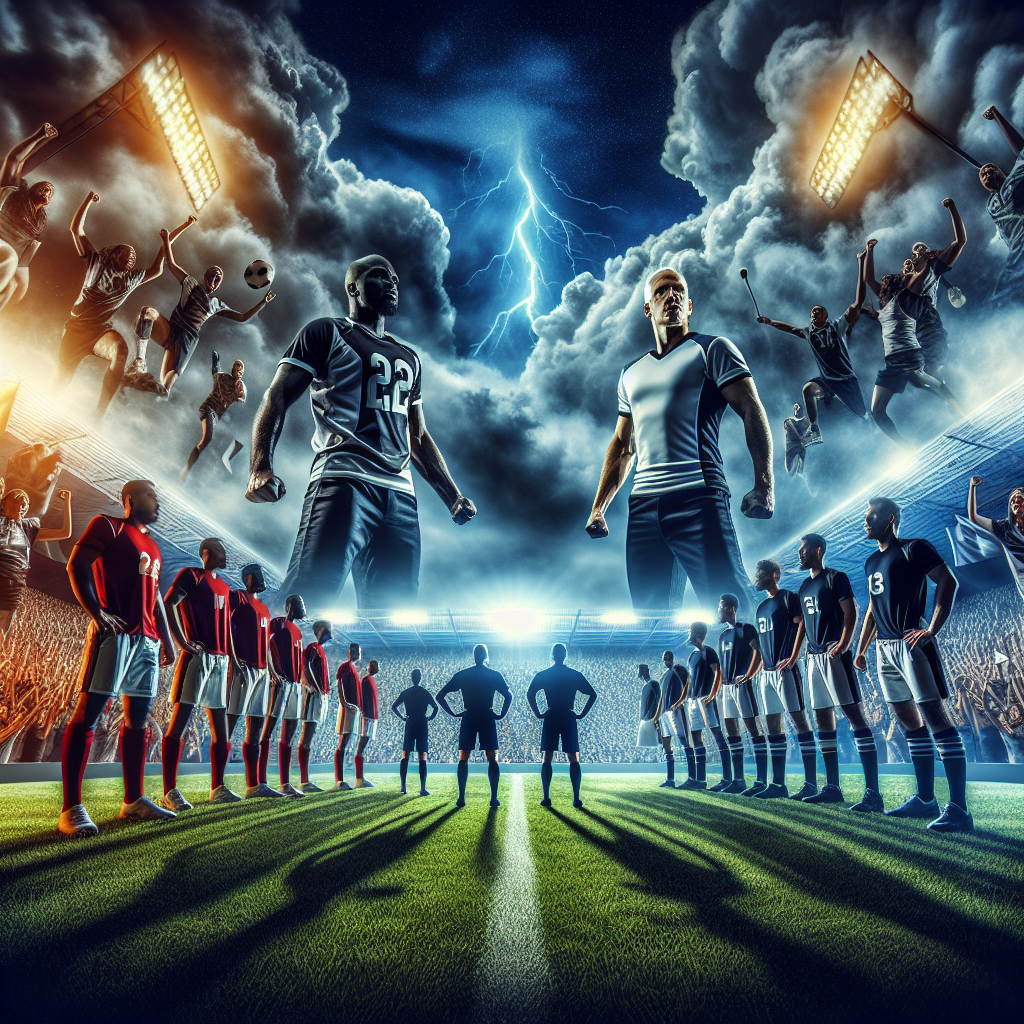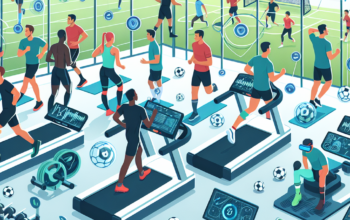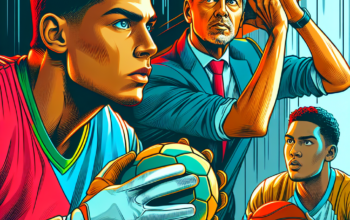Introduction
In the world of sports, few elements capture the hearts and minds of fans more than rivalries. The intense emotions, histories, and narratives surrounding these matchups create a unique spectacle that transcends the game itself. “The Big Rivalries: Emotional Matches That Define the League” illuminates the pivotal confrontations that have not only shaped teams but also defined entire leagues. In 2025, we delve into the most electrifying rivalries that still evoke passion and excitement among fans globally, highlighting the matches that have become etched in the annals of sporting history.
The Historic Rivalries That Shaped the League
When speaking of the big rivalries that define leagues, one cannot overlook the historical context behind each clash. Take, for instance, the fierce competition between Real Madrid and FC Barcelona, known as “El Clásico.” This rivalry goes beyond mere football; it’s a representation of a cultural and political schism in Spain that dates back decades. Each match is laden with emotional weight, as fans from both sides see these encounters as a matter of pride, identity, and superiority.
Similarly, in the English Premier League, the North West Derby between Liverpool and Manchester United stands as a testament to regional pride and historical contention. Since the late 19th century, this rivalry has produced memorable matches, unforgettable moments, and some of football’s greatest legends. Each clash has an added layer of significance—players like Steven Gerrard and Eric Cantona have become not just icons of their respective clubs but symbols of their cities’ ambitions and legacies. These historic rivalries, with their roots in cultural and local contexts, encapsulate the very essence of what it means to be part of the league.
Modern-Day Rivalries and Their Impact
As we move into 2025, the landscape of sports rivalries continues to evolve, reflecting modern narratives associated with brand values, athletes’ personalities, and global fanbases. One of the rising rivalries is between Paris Saint-Germain (PSG) and Manchester City, intensified by the influx of investments and the pursuit of UEFA Champions League glory. The high-stakes encounters between these two clubs have become not just football matches but a clash of football philosophies and financial prowess, drawing attention from fans around the world.
Moreover, the Boston Celtics and the Los Angeles Lakers rivalry in the NBA has seen a resurgence with the emerging talent of stars who hold the same competitive spirit as their predecessors. Players like Jayson Tatum and LeBron James have reignited the fire, ensuring that their encounters not only remain thrilling but also encapsulate the legacies of these storied franchises. Modern rivalries continue to evolve and capture the attention of the global audience, fostering not just competition but a deeper emotional connection between teams and their supporters.
Key Matches That Defined Rivalries
Throughout history, certain matches have transcended the usual excitement of a sporting event and entered the realm of legendary lore. The famous match played on April 16, 1983, when Liverpool faced Manchester United at Anfield, is engraved in the minds of fans. The atmosphere was electric, with Liverpool securing a vital 2-1 victory that ultimately led them to a historic league title, reinforcing their dominance over their arch-rivals once again.
In more recent history, the 2023 UEFA Champions League semi-final clash between Real Madrid and Manchester City has become vital in contextualizing the modern era of football rivalries. After a dramatic first leg that ended in a 1-1 draw, the return leg saw Real Madrid overturn a late deficit to win 3-1 and progress to the final. The emotional rollercoaster of that match not only showcased incredible skill and drama but also highlighted the high stakes and pressures associated with modern football rivalries, making it a defining moment for each club and their fans.
Not to be overlooked are the emotional undercurrents of the Boston Red Sox and New York Yankees rivalry. The unforgettable Game 7 of the 2003 ALCS is seared into the memories of fans, showcasing one of the highest tensions in sports history. The match delivered an emotional blow to the Red Sox, who were just one game away from the World Series, but the Yankees’ dramatic comeback epitomized their resilience. Matches like these create narratives that reverberate through the years, harkening back to the emotional narratives that define the league.
The Role of Fans in Shaping Rivalries
Fans play an indispensable role in cultivating and sustaining rivalries. Their passion and loyalty fuel the competitive spirit, creating an electric atmosphere that adds layers of significance to each match. The chants, colors, and organized displays during matches transform stadiums into temples of rivalry, amplifying the emotions felt by players on the pitch. Fans don’t just witness these encounters; they feel every moment, every goal, and every defeat intensely, nurturing a culture of pride and belonging.
As of 2025, the involvement of social media has magnified the impact fans have on rivalries. Platforms like Twitter and Instagram allow supporters to engage in banter, share experiences, and rally behind their teams instantaneously. The reaction to a controversial call or an incredible goal spreads like wildfire, further enriching the emotional narrative associated with these encounters. As rivalries continue to intersect with digital culture, the passion and commitment of fans will undoubtedly remain a driving force behind their evolution and perpetuation.
Furthermore, the generational aspect of fandom cannot be overlooked. Parents instilling a sense of allegiance in their children, attending matches together, and sharing the emotions attached to each match contribute to a cycle of fandom that strengthens rivalries over time. This emotional lineage enriches the culture surrounding rivalries, ensuring that these historical matches remain relevant not just as moments in time but as cherished experiences shared within families across generations.
Conclusion: The Unending Appeal of Rivalries
In summary, the exploration of “The Big Rivalries: Emotional Matches That Define the League” showcases how these competitions extend beyond the confines of the pitch. Rivalries serve as a catalyst for not only sporting excellence but also cultural expressions and emotional investments that define the very fabric of the leagues. From historic matchups like El Clásico to modern dynamics such as PSG vs. Manchester City, the rivalries in sports engender a unique blend of tension, drama, and loyalty that captivates fans worldwide.
The passionate involvement of fans, the unforgettable matches that craft enduring narratives, and the cultural significance behind rivalries ensure their place at the heart of sports. As we venture further into the 2020s, these big rivalries will continue to evolve, retaining their emotional potency and shaping the future of sports as we know it.
FAQs
What are the most famous sports rivalries?
Some of the most famous sports rivalries include Real Madrid vs. FC Barcelona, Manchester United vs. Liverpool, Boston Red Sox vs. New York Yankees, and Lakers vs. Celtics in the NBA. Each rivalry encapsulates unique histories, cultural dynamics, and intense competition that engage fans deeply.
How do rivalries affect player performance?
Rivalries can heighten player performance due to increased adrenaline and motivation. Players often see these matches as opportunities to prove themselves, leading to elevated skill levels and memorable performances, which can significantly impact the outcome of the match.
Are rivalries important for league popularity?
Yes, rivalries are crucial for league popularity. They create engaging storylines that attract viewers and show up attendance at matches. The heightened emotional stakes associated with these rivalries enhance the overall fan experience and draw in a larger audience, impacting the financial success of leagues.












